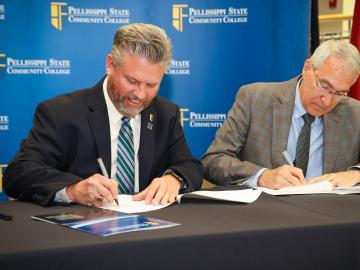Filter News
Area of Research
- (-) Fusion and Fission (54)
- (-) Isotopes (35)
- Advanced Manufacturing (34)
- Biological Systems (18)
- Biology and Environment (177)
- Biology and Soft Matter (5)
- Building Technologies (12)
- Chemical and Engineering Materials (4)
- Chemistry and Physics at Interfaces (11)
- Clean Energy (522)
- Climate and Environmental Systems (14)
- Computational Biology (6)
- Computational Chemistry (5)
- Computational Engineering (5)
- Computer Science (19)
- Data (1)
- Earth Sciences (1)
- Electricity and Smart Grid (3)
- Energy Frontier Research Centers (14)
- Energy Sciences (5)
- Fossil Energy (3)
- Fuel Cycle Science and Technology (3)
- Functional Materials for Energy (16)
- Fusion Energy (17)
- Geographic Information Science and Technology (3)
- Isotope Development and Production (3)
- Materials (433)
- Materials Characterization (2)
- Materials for Computing (36)
- Materials Synthesis from Atoms to Systems (13)
- Materials Under Extremes (12)
- Mathematics (1)
- National Security (79)
- Neutron Data Analysis and Visualization (4)
- Neutron Science (190)
- Nuclear Science and Technology (74)
- Nuclear Systems Modeling, Simulation and Validation (3)
- Nuclear Systems Technology (1)
- Quantum Condensed Matter (4)
- Quantum information Science (9)
- Reactor Technology (1)
- Renewable Energy (4)
- Sensors and Controls (5)
- Supercomputing (311)
- Transportation Systems (11)
News Topics
- 3-D Printing/Advanced Manufacturing (3)
- Advanced Reactors (6)
- Artificial Intelligence (1)
- Bioenergy (1)
- Biology (1)
- Biomedical (6)
- Buildings (1)
- Chemical Sciences (4)
- Climate Change (1)
- Composites (1)
- Computer Science (2)
- Critical Materials (1)
- Decarbonization (2)
- Energy Storage (4)
- Environment (3)
- Exascale Computing (1)
- Fossil Energy (1)
- Frontier (1)
- Fusion (22)
- Grid (2)
- High-Performance Computing (2)
- Irradiation (1)
- Isotopes (25)
- ITER (6)
- Materials (5)
- Materials Science (5)
- Microscopy (1)
- Nanotechnology (1)
- National Security (1)
- Net Zero (1)
- Neutron Science (1)
- Nuclear Energy (29)
- Partnerships (3)
- Physics (1)
- Security (2)
- Simulation (3)
- Space Exploration (4)
- Sustainable Energy (4)
- Transportation (2)
Media Contacts

Oak Ridge National Laboratory researchers have developed a method to simplify one step of radioisotope production — and it’s faster and safer.

Representatives from Pellissippi State Community College and ORNL signed a memorandum of understanding for the new Chemical Radiation Technology pathway

As renewable sources of energy such as wind and sun power are being increasingly added to the country’s electrical grid, old-fashioned nuclear energy is also being primed for a resurgence.

ORNL’s electromagnetic isotope separator, or EMIS, made history in 2018 when it produced 500 milligrams of the rare isotope ruthenium-96, unavailable anywhere else in the world.

A method using augmented reality to create accurate visual representations of ionizing radiation, developed at ORNL, has been licensed by Teletrix, a firm that creates advanced simulation tools to train the nation’s radiation control workforce.

Growing up in suburban Upper East Tennessee, Layla Marshall didn’t see a lot of STEM opportunities for children.
“I like encouraging young people to get involved in the kinds of things I’ve been doing in my career,” said Marshall. “I like seeing the students achieve their goals. It’s fun to watch them get excited about learning new things and teaching the robot to do things that they didn’t know it could do until they tried it.”
Marshall herself has a passion for learning new things.

ORNL scientists combined two ligands, or metal-binding molecules, to target light and heavy lanthanides simultaneously for exceptionally efficient separation.

When virtually unlimited energy from fusion becomes a reality on Earth, Phil Snyder and his team will have had a hand in making it happen.

Mickey Wade has been named associate laboratory director for the Fusion and Fission Energy and Science Directorate at the Department of Energy’s Oak Ridge National Laboratory, effective April 1.

A series of new classes at Pellissippi State Community College will offer students a new career path — and a national laboratory a pipeline of workers who have the skills needed for its own rapidly growing programs.




